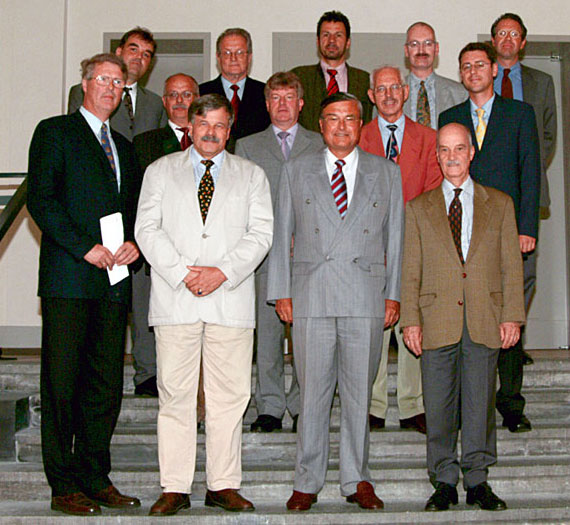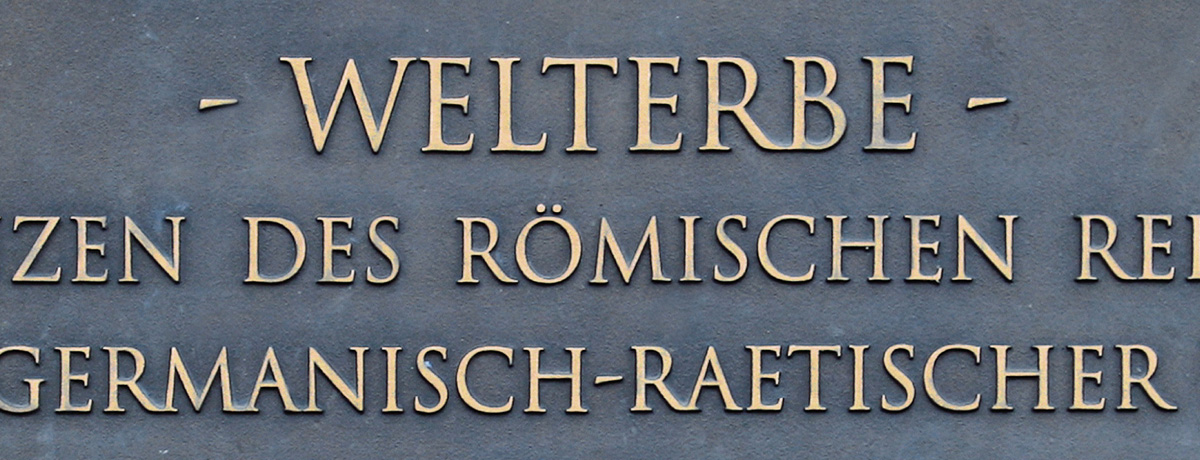HISTORY OF THE GERMAN LIMES COMMISSION
The German Limes Commission (DLK), founded in Esslingen in 2003, is the point of contact for all activities relating to the protection, research and tourist presentation of the Upper German-Raetian Limes. Following the inclusion of the Limes on the UNESCO World Heritage List in 2005, its work is intended to help ensure international standards in the care and management of Germany's largest and best-known archaeological monument.
Before a site is inscribed on the World Heritage List, extensive preparatory work must be carried out, which often takes years. In the case of the ORL, after a preparatory phase lasting around three years, the German Limes Commission (DLK) was founded in Esslingen on June 18, 2003 by the states of Rhineland-Palatinate, Hesse, Baden-Württemberg and Bavaria with the aim of promoting the nomination, acting as a point of contact for UNESCO and ensuring the protection and management of the monument once it has been inscribed on the World Heritage List. With effect from January 1, 2006, North Rhine-Westphalia was accepted as an associate member with regard to the planned extension of the Lower German Limes, thus establishing the current basic structure of the DLK.
The commission is made up of a total of 14 members: The state archaeologists and a ministerial representative from each of the participating states, a representative of the professors of the subject "Archaeology of the Roman Provinces", the chairman of the "Committee of Roman Museums on the Limes", a representative of the Romano-Germanic Commission and the chairman of the association of municipalities and local authorities along the ORL in the "Verein Deutsche Limes-Straße e.V.". At an operational level, the managing director of the DLK is responsible for the implementation of the overarching administrative issues, a Limes coordinator in each of the federal states is responsible for all aspects of monument conservation and together they are responsible for implementing the resolutions of the German Limes Commission, which meets twice a year.
With this diverse composition, the commission is ideally positioned to ensure that the tasks relating to the management of Germany's largest and best-known archaeological monument are carried out. The DLK is the point of contact not only for UNESCO regarding the World Heritage Site, but also for all activities relating to the protection, research and scientific presentation of the Upper German-Raetian Limes. Overarching coordination is essential as the monument, which spans four federal states, is subject to four monument protection laws at a legal level and is administered by four ministries and state authorities at an administrative level. This circumstance can only be taken into account if all the relevant competencies are brought together in a decision-making body.

Founding members and first managing director from top left:
Dr. Andreas Thiel (Managing Director), Ulrich Pfeifle, Dr. C. Sebastian Sommer, Dr. Reinhard Dietrich, Dr. Andreas Baur, Anton Neugebauer, Prof. Dr. Egon Schallmayer, Dr. Rudolf Hermann, Dr. Bernd Steidl, Dr. Hans-Helmut Wegner, Prof. Dr. Hans Ulrich Nuber, Prof. Dr. Dieter Planck, Prof. Dr. Siegmar von Schnurbein


